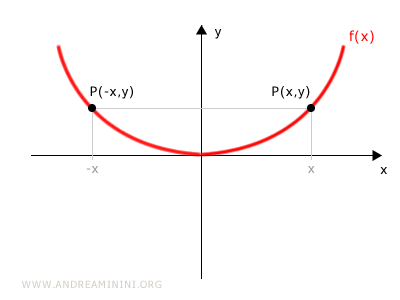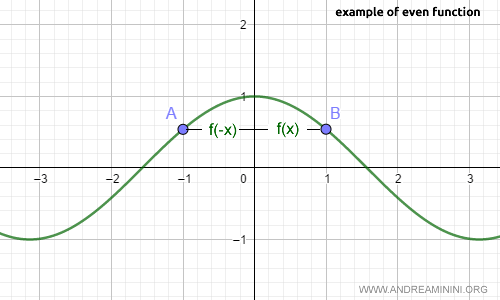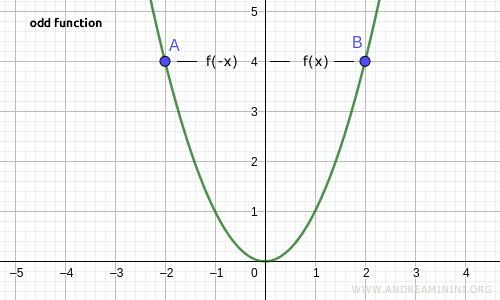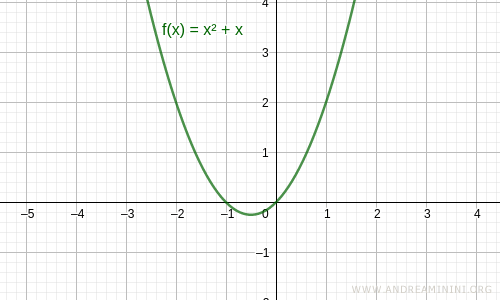Even Functions
What is an even function?
A function is called even if, for every x in its domain, the following condition holds: $$ f(x) = f(-x) \ \ \ \forall \ x \ \in D $$
If a function is even, its graph is symmetric with respect to the y-axis, because for every point P(x, y), there is a corresponding point P(-x, y).

How can you check if a function is even?
- Analytically, you calculate f(-x) by substituting the variable x with its opposite, -x, and compare the result with f(x). If the two are equal, the function is even. $$ f(-x) = f(x) $$
Example: Let's take the function f(x) = x2. By substituting x with -x, we can check if we get the same function. $$ f(-x) = (-x)^2 = x^2 = f(x) $$ Since f(-x) equals f(x), the function is even.
- Graphically, you simply observe if the graph is symmetrical with respect to the y-axis.

Note: Just because a function isn't even doesn't mean it's odd. And vice versa. For instance, the function f(x) = x2 + x is neither even nor odd.
A Practical Example
A classic example of an even function is the cosine function.

For every x in the cosine's domain, the relation f(x) = f(-x) holds, and its graph is symmetric about the y-axis.
Note: For example, at x = 1 and x = -1, the cosine function gives the same value, i.e., f(1) = f(-1), and so on.
Example 2
Another example of an even function is f(x) = x2.
$$ f(x) = x^2 $$ $$ f(-x) = (-x)^2 = x^2 $$
Here too, for every value in the domain, f(x) equals f(-x).

Note: In general, if a function contains only even powers of x, it is an even function.
Example 3
Let’s verify analytically if the following function is even:
$$ f(x) = x^2 + x $$
Substitute x with -x in the function:
$$ f(-x) = (-x)^2 + (-x) = x^2 - x $$
The result is different from f(x) = x2 + x.
Thus, this is not an even function.

Note: The function f(x) = x2 + x is also not an odd function.
And so on.
